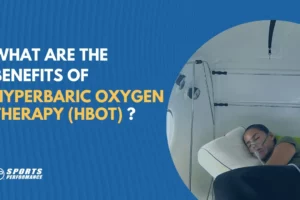I’ve been reading a lot on the internet lately that icing is bad for you or that you shouldn’t do it. The argument against icing is that it impedes healing; it slows down the inflammatory process, which is what your body needs to go through in order to heal. Is this true? Why have we been using ice? What should you do going forward: ice or not? First, let’s review injury and what icing has traditionally used for.
How do tissues heal?
Tissue healing is a four-step process: initial injury, inflammation, regrowth (regeneration), and remodeling. However, the stages are not as clear cut as that: your body can be in the inflammatory stage but simultaneously be in the beginning or late regrowth stages, with surrounding tissues early in the remodeling stage as well. Throughout many of the stages, rehab professionals, physicians, and individuals have traditionally used ice to treat injury. The intended purpose of icing an injury is to reduce inflammation, swelling, and decrease pain during the inflammatory stage and sometimes beyond.
The intended purpose of icing an injury during the injury or rehabilitative process is to reduce swelling and decrease pain during the inflammatory stage and sometimes beyond.
What are the effects of ice during tissue healing?
Let’s look at icing during the inflammatory stage first since this phase is the main argument of the anti-icing movement. Icing has been shown to reduce localized blood flow through arterial constriction and thus reduce the release of hormones that help rebuild and repair tissues. However, while this reduced blood flow may last up to hours after the cessation of icing, ice does not stop the physiological process of inflammation and healing. The main argument against it is that icing will slow down this process.
What about ice after the inflammatory stage?
Later in the healing stages, ice can also be used when swelling has lasted longer than is beneficial. In some cases, a person may have swelling in the knee for up to a couple of months after ACL reconstruction or even longer in the ankle after a sprain. By reducing blood flow, icing limits the amount of fluid that moves into these areas and hence, reduce swelling. Why do we want to get rid of swelling anyway? Increased swelling can decrease the strength and stability of a joint, inducing central nervous system suppression of the muscles surrounding a joint; causing buckling or a feeling of instability or decreased strength.
By reducing blood flow, icing limits the amount of fluid that moves into these areas and hence, reduce swelling.
When else could we use ice?
Icing is also used to help decrease pain. Pain is why most people seek professional help, they want it gone at best or lessened at least while they do what they need to do. Pain can, also, impede loading, creating abnormal compensatory movements, and if gone on too long, change the way you move unconsciously. Decreasing pain, through icing, can facilitate more normal loading and allow the individual to be more comfortable. There is conclusive evidence in the literature that icing will help reduce pain both immediate after the injury and in the later stages of healing. All this reduced pain comes at a cost though: icing has been linked to transient reductions in strength, speed, endurance and coordination though.
Ice for a short period (3-5 minutes) then warm back up properly so that you do not return to your sport without full strength, speed, endurance, and coordination.
The big question then: should I ice? My answer depends on why are you using the ice. Are you using it for facilitation of healing? If so, the evidence isn’t there to support that application. Are you using ice to decrease swelling and pain? The evidence is there to support this application. And what if you are using it to decrease pain and swelling during a sporting event? Ice for a short period (3-5 minutes) then warm back up properly so that you do not return to your sport without full strength, speed, endurance, and coordination. Game on.
As always, I hope this helps! If you have any questions or would like to read about certain topics, send us an email at TeamSP@SportsPerformancePT.com.
-Dr. Nick Schroeder, PT, DPT
For more tips on optimizing athletic performance FOLLOW US on:
- Instagram: http://www.instagram.com/SportsPerformancePT
- Facebook: http://www.facebook.com/SportsPerformancePT
- YouTube: http://www.youtube.com/c/SportsPerformancePT










